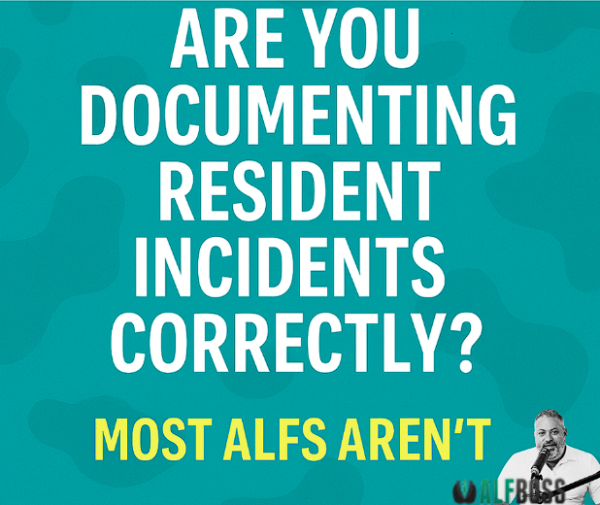
Are You Documenting Resident Incidents Correctly? Most ALFs Aren’t
Here’s something I’ve seen time and time again.
A resident has a fall. Staff write a few lines in the incident report, file it away, and move on.
It feels like it’s handled — until AHCA shows up and asks to review the file.
That’s when the issues start.
Most of the time, it’s not the incident itself that causes the deficiency — it’s the way it was documented.
Why Incident Documentation Is a Big Deal
When something goes wrong in your facility — a fall, a med error, an elopement — AHCA expects a clear record of how it was handled.
Not just what happened, but:
- How your staff responded
- Who was notified
- What changed afterward to prevent it from happening again
Most ALFs miss at least one of these pieces. And that’s what gets flagged.
The Most Common Mistakes in Incident Reports
1. No Follow-Up
Documenting the incident is step one. But if there’s no mention of follow-up vitals, physician notification, or any action taken afterward, it’s incomplete in AHCA’s eyes.
2. Reports Are Too Vague
Phrases like “Resident found on floor” don’t provide enough detail.
Where exactly? What time? Who found them? What was their condition?
Specifics matter. If your report leaves questions, surveyors will start asking them.
3. No Corrective Action Listed
If the same thing could happen again tomorrow, that’s a red flag.
What did you do to prevent a repeat?
Was the care plan updated? Was a hazard removed?
Corrective action is a required part of your documentation — not an optional one.
Two Simple Mistakes That Lead to Citations
Even if the report has the basics, I often see operators miss two key requirements:
Not Documenting Family Notification Clearly
AHCA expects to see not just that the family was contacted — but:
- Who was contacted (name and relationship)
- What time and what day
- Who made the call or message
Vague entries like “POA notified” don’t meet the standard. Name, date, and time should always be included.
Not Documenting Healthcare Provider Notification
If the resident’s doctor or home health provider was notified, it needs to be documented just as clearly:
- Name of the provider
- Time and method of contact
- Who made the contact
This isn’t just good practice — it’s part of Florida regulation. If there’s no proof it happened, AHCA will treat it as if it didn’t.
What AHCA Wants to See
Every incident report should clearly document:
- What happened (specific and objective)
- Who was involved (resident, staff, witnesses)
- When and where it happened
- What condition the resident was in before and after
- Who was notified and when (family, doctor, etc.)
- What changes were made as a result (care plan, staffing, environment)
Use plain, clear language. This isn’t a formality — it’s your paper trail if something serious happens.
Final Tip
Here’s something I recommend to every operator I work with:
Pick 2–3 incident reports from the past month and read them like a stranger.
If you didn’t work at the facility, would you still understand:
- What happened?
- Who handled it?
- Whether the resident was okay?
- What changed afterward?
And most importantly — can you tell who was notified, when, and how?
If not, now is the time to fix it. AHCA will catch it if you don’t.